WordPress Security Checklist: Protect Your Australian Business
WordPress Security Checklist: Protect Your Australian Business
WordPress powers over 40% of Australian business websites, making it a prime target for cybercriminals. In 2024 alone, Australian businesses lost $33 million to website breaches, with 73% of attacks targeting WordPress sites. The good news? 95% of WordPress hacks are entirely preventable. This comprehensive security guide provides a step-by-step checklist to bulletproof your WordPress site, comply with Australian data protection laws, and sleep soundly knowing your business is protected.
The State of WordPress Security in Australia
Recent data from the Australian Cyber Security Centre reveals that small to medium businesses are increasingly targeted, with WordPress vulnerabilities being the most common entry point. The average cost of a breach for Australian SMEs is $276,000 – enough to destroy many businesses. Yet most attacks exploit known vulnerabilities that could have been prevented with basic security measures.
Common WordPress Attack Vectors:
- Outdated plugins/themes (43% of breaches)
- Weak passwords (29% of breaches)
- Vulnerable hosting (18% of breaches)
- SQL injection (6% of breaches)
- Cross-site scripting/XSS (4% of breaches)
Part 1: Essential Security Foundations
1.1 Keep Everything Updated
Outdated software is the #1 security risk. Here's your update protocol:
Update Schedule:
- WordPress Core: Update within 24 hours of release
- Plugins: Update weekly, test on staging first
- Themes: Update monthly, keep only active theme
- PHP Version: Use PHP 8.0+ for security features
- MySQL/MariaDB: Keep database software current
1.2 Strong Authentication
Password Requirements:
- Minimum 16 characters (longer = better)
- Mix of uppercase, lowercase, numbers, symbols
- Unique for every account
- Use a password manager (Bitwarden, 1Password)
- Change every 90 days for admin accounts
1.3 Two-Factor Authentication (2FA)
2FA is mandatory for all WordPress users. Implementation steps:
- Install a 2FA plugin (Wordfence, Google Authenticator)
- Require 2FA for all user roles
- Provide backup codes for emergencies
- Test recovery procedures monthly
- Document the process for new users
Part 2: SSL Certificates and HTTPS
HTTPS is non-negotiable for Australian businesses. Beyond security, it's required for:
- PCI compliance (handling credit cards)
- Google search rankings (HTTPS is a ranking factor)
- Browser trust (Chrome shows "Not Secure" warnings)
- Customer confidence (87% check for padlock)
SSL Certificate Options
Certificate Types & Use Cases:
- Let's Encrypt (Free): Perfect for small businesses, auto-renews
- Domain Validated ($10-50/year): Basic encryption, quick setup
- Organisation Validated ($50-200/year): Shows company name
- Extended Validation ($200-1000/year): Green bar, highest trust
- Wildcard SSL ($100-300/year): Covers all subdomains
HTTPS Implementation Checklist
- Purchase/install SSL certificate
- Update WordPress URL settings to HTTPS
- Set up 301 redirects from HTTP to HTTPS
- Update internal links to HTTPS
- Fix mixed content warnings
- Update Google Search Console
- Update social media links
- Test with SSL Labs (aim for A+ rating)
Part 3: Australian Hosting Security
Your hosting provider is your first line of defence. Australian hosting offers data sovereignty benefits and better performance for local users.
Essential Hosting Security Features
Must-Have Features:
- Web Application Firewall (WAF): Blocks malicious traffic
- DDoS Protection: Prevents denial of service attacks
- Automated Backups: Daily backups with 30-day retention
- Malware Scanning: Real-time detection and removal
- SSL Support: Free Let's Encrypt integration
- Isolated Accounts: Prevents cross-contamination
- Server-Level Caching: Improves speed and security
- 24/7 Monitoring: Proactive threat detection
Recommended Australian Hosts
- VentraIP: Australian-owned, excellent support
- SiteGround: Sydney data centre, top security
- WP Engine: Premium managed WordPress hosting
- Digital Pacific: Local support, good for SMEs
Part 4: Bulletproof Backup Strategy
Backups are your insurance policy. When (not if) something goes wrong, proper backups mean the difference between a minor inconvenience and business catastrophe.
The 3-2-1 Backup Rule
- 3 Copies: Original + 2 backups minimum
- 2 Different Media: Server + cloud storage
- 1 Offsite: Protected from physical disasters
Backup Implementation
- Choose Backup Solution:
- UpdraftPlus (free, reliable)
- BackWPup (comprehensive features)
- VaultPress (Automattic's solution)
- BlogVault (real-time backups)
- Configure Schedule:
- Database: Daily backups
- Files: Weekly backups
- Full site: Monthly backups
- Storage Locations:
- Primary: Australian cloud storage (for compliance)
- Secondary: Different provider/region
- Tertiary: Local encrypted drive
- Test Restoration: Monthly restore tests mandatory
Part 5: Security Plugins & Configuration
Recommended Security Plugins
Top Security Plugins Compared:
- Wordfence:
- Best firewall and malware scanner
- Real-time threat defence feed
- Country blocking for high-risk regions
- Price: Free version sufficient for most
- Sucuri:
- Cloud-based WAF
- Excellent for high-traffic sites
- Professional cleanup service
- Price: From $199/year
- iThemes Security:
- Great for beginners
- One-click security fixes
- Good brute force protection
- Price: Free version available
Essential Security Settings
- Login Protection:
- Limit login attempts (3 tries, 20-minute lockout)
- Hide login page (change /wp-admin URL)
- CAPTCHA on login forms
- Block username enumeration
- File Permissions:
- Directories: 755 or 750
- Files: 644 or 640
- wp-config.php: 440 or 400
- Database Security:
- Change table prefix from wp_
- Remove unused tables
- Regular optimization
Part 6: Advanced Security Measures
Web Application Firewall (WAF)
A WAF is your site's bodyguard, filtering malicious traffic before it reaches WordPress.
WAF Options:
- Cloudflare: Free plan available, Australian servers
- Sucuri CloudProxy: Premium protection
- AWS WAF: For high-traffic sites
- Plugin-based: Wordfence, All In One WP Security
Security Headers
Add these headers to your .htaccess file:
# Security Headers
Header set X-XSS-Protection "1; mode=block"
Header set X-Frame-Options "SAMEORIGIN"
Header set X-Content-Type-Options "nosniff"
Header set Referrer-Policy "strict-origin-when-cross-origin"
Header set Content-Security-Policy "default-src 'self';"
Part 7: Monitoring & Incident Response
Security Monitoring Tools
- Uptime Monitoring: Pingdom, UptimeRobot
- File Integrity: Wordfence, Sucuri
- Traffic Analysis: Google Analytics anomaly detection
- Log Analysis: WP Activity Log plugin
Incident Response Plan
If Your Site Is Hacked:
- Take site offline immediately
- Notify hosting provider
- Change all passwords
- Scan for malware
- Restore from clean backup
- Patch vulnerability
- Monitor for reinfection
- Notify affected users (legal requirement)
Part 8: Australian Legal Compliance
Australian businesses must comply with specific data protection laws:
Legal Requirements:
- Privacy Act 1988: Protect personal information
- Notifiable Data Breaches: Report breaches within 72 hours
- Australian Privacy Principles: 13 principles to follow
- PCI DSS: If processing credit cards
- Record Keeping: Maintain security logs for 7 years
Your 30-Day Security Action Plan
Week 1: Foundations
- Update all software
- Implement strong passwords
- Enable 2FA
- Install SSL certificate
Week 2: Backups & Monitoring
- Set up automated backups
- Test restore process
- Install security plugin
- Configure monitoring
Week 3: Advanced Security
- Implement WAF
- Add security headers
- Audit user permissions
- Review hosting security
Week 4: Testing & Documentation
- Run security audit
- Document procedures
- Train team members
- Schedule regular reviews
Remember: Security Is Ongoing
WordPress security isn't a one-time task – it's an ongoing commitment. Schedule monthly security reviews, stay informed about new threats, and never become complacent. The cost of prevention is always less than the cost of recovery.
Need Professional WordPress Security?
Don't leave your business vulnerable to attack. Spruik's WordPress security experts provide comprehensive security audits, hardening, and ongoing monitoring for Australian businesses. We'll implement enterprise-grade security while you focus on running your business. Get your free security assessment today and sleep soundly knowing your WordPress site is protected.
About the Author

Andrew Callaghan
Digital Strategist at Spruik. Andrew specialises in data-driven marketing strategies and has helped hundreds of Australian businesses achieve their digital goals.
Related Articles
GEO: Why Brand Authority is Everything in AI Search
GEO: Why Brand Authority is Everything in AI Search
Video Marketing Strategy Guide: Create Content That Converts
Video Marketing Strategy Guide: Create Content That Converts
Instagram Marketing Mastery: Grow Followers & Drive Sales
Instagram Marketing Mastery: Grow Followers & Drive Sales
Get More Marketing Insights
Subscribe to our newsletter and get the latest digital marketing strategies delivered to your inbox.
No spam. Unsubscribe anytime.
